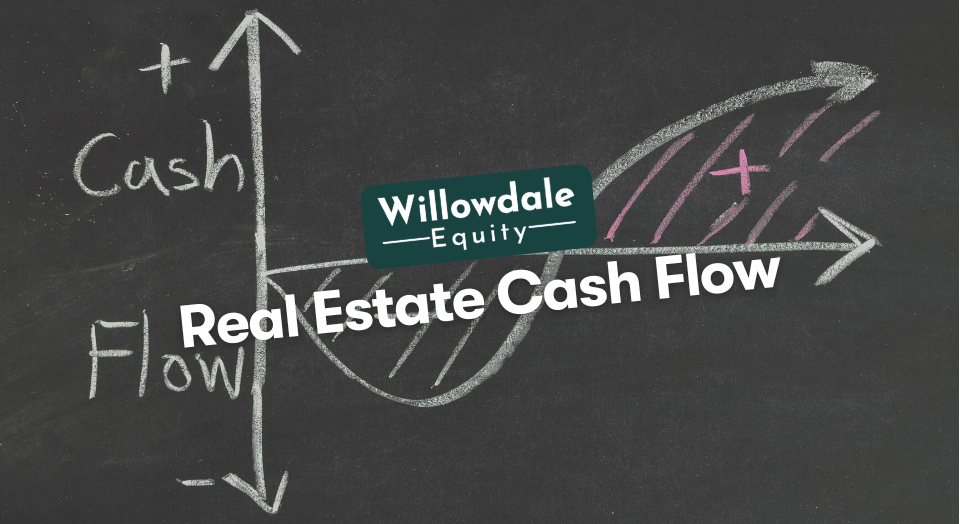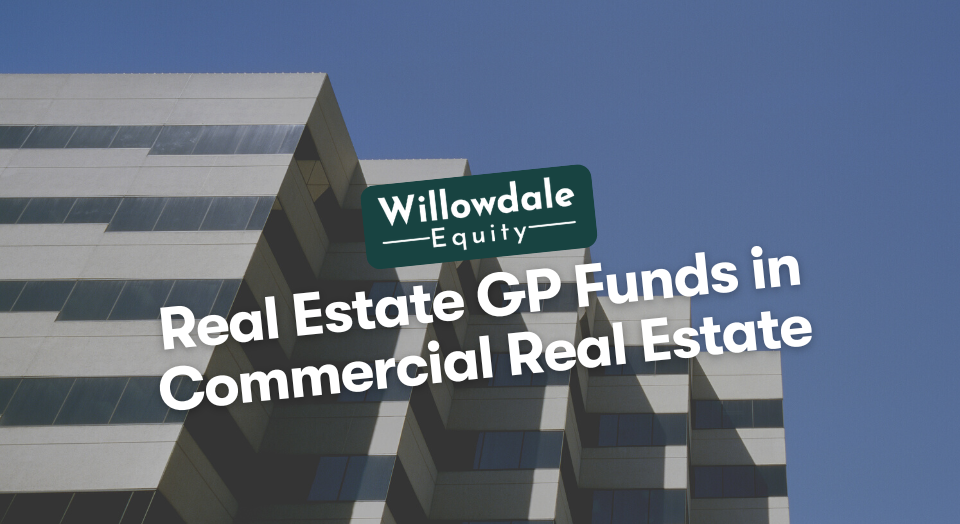
Real Estate Cash Flow: The Lifeblood of a Multifamily Property
This article is part of our guide on what a good cap rate is for multifamily, available here.
Most newly-minted landlords assume that cash flow refers to the money flowing in from monthly rental income. In reality, cash flow refers to the movement of money both in and out of rental properties.
That means calculating income that’s being generated in relation to property expenditures. In this article, we’ll cover how to properly view cash flow in its rightful position as the lifeblood of a multifamily property.
Key Takeaways
-
There are several ways to generate positive cash flow in real estate. Property owners can enhance the experience of living in a rental unit by offering new perks and services that also generate additional income streams, increase cash flow and improve their real estate investment returns.
-
Paying out more to own and maintain a property than the incoming revenue will lower your cash flow. While lower cash flow sometimes just means a thinner margin, it can quickly turn into negative cash flow and cause you to lose money on your real estate investment every month.
-
While the high liquidity of cash flow dividends makes it tempting to rely on cash flow as income, establishing a certain percentage to tuck away for reserves is smart.
What Is Cash Flow in Real Estate?
Cash flow in real estate can be summed up as the product of money in versus money out when running a rental property. Positive cash flow is the secret to enjoying a mostly passive income stream.
However, rental properties can generate negative cash flows if expenses exceed income. In addition to providing landlords with more money, positive cash flow also makes it easier to maintain and update a property using your cash surplus.
A property cash flow analysis is critical when determining the profitability of a rental property. You should always look at anticipated cash flow when deciding between renting out and selling a property. Renting instead of selling provides you with the option to make money on a property today while also creating the favorable condition of watching property value increase over time.
It’s necessary to calculate both incoming cash flow and gross operating expenses when assembling a cash flow analysis. Incoming cash flow should include gross rental income, additional income from extra fees and services, and vacancy rate. Gross operating expenses cover property management fees, maintenance costs, capital expenditures, and property taxes.
Next, let’s look at ways to increase positive cash flow.
Related Read: Investing for Cash Flow vs. Appreciation
Ways in How to Generate Cash Flow in Real Estate

There are several ways to generate positive cash flow in real estate. Property owners can enhance the experience of living in a rental unit by offering new perks and services that also generate additional income streams, increase cash flow and improve their real estate investment returns.
- Reduce Expenses: Cut costs by shopping around for new vendors.
- Increase Rent: Consider having a local real estate market analysis done to get your monthly rent payments in line with current local market rents.
- Add Non-Rental Revenue Streams to Your Rental Property: Consider adding coin-operated laundry machines, snack machines, soda machines, and other non-rent revenue sources to your property.
- Charge Extra Fees: Consider allowing pets in exchange for a monthly pet fee, or flat move-in fees, application fees, administration fees, and more.
- Charge More for Premium Units: Consider upgrading the interior finishes to all or select units in the form of upgraded flooring, high-end appliances, new vanities, upgraded fixtures, a smart tech package, and much more.
- Lease Extra Parking Spots: Make extra parking spaces available for lease.
Next, it’s also important to be alert for common factors that lower potential cash flow.
Things That Lower your Potential Cash Flow
Paying out more to own and maintain a property than the incoming revenue will lower your cash flow. While lower cash flow sometimes just means a thinner margin, it can quickly turn into negative cash flow and cause you to lose money on your real estate investment every month.
- Vacancy: Vacant units lower cash flow.
- Delinquency/Collections: When tenants don’t pay their rent, their essentially squatting as they’re physically occupying a unit and not paying, while that same unit can be leased out to a paying tenant.
- Tenant Turnover: When tenants are constantly coming and going, you’re potentially losing money through frequent vacancies, time spent showing units and the cost of fixing and cleaning units to turn and make them lease-ready for new tenants.
- Normal Property Management: If a property is more expensive to maintain due to its age, location, or features, this slows down cash flow.
- Debt Service: How you finance a rental property can reduce cash flow significantly if you lock in an above-market interest rate, your leverage, and whether your debt is floating rate or fixed.
- Property Taxes: High property taxes, although annual, can eat into your total income every month.
These factors make more sense once you read on to see a real-life example of what apartment cash flow investing might look like for a typical property owner.
Apartment Cash Flow Real Estate Investing Example

Cash flow from real estate investing looks at everything left after income from all property-related sources comes in. While the high liquidity of cash flow dividends makes it tempting to rely on cash flow as income, establishing a certain percentage to tuck away for reserves is smart.
How do you break down cash flow in a typical multifamily complex? Start with the number of units. You’ll then multiply the number of units by the monthly rent.
Let’s say you’re operating a cash flowing property with fifty units that charges $1,000 per unit per month. That brings your total monthly gross potential income to $50,000 for the entire property. Now let’s say 7% of the units are vacant and 2% of the tenants are not paying their rent and are in collections, which means that the property is bringing in about $45,500 in gross income ($50,000 x 0.91=$45,500).
To get your cash flow total, you’ll need to determine your operating expense ratio. Your rental properties expense ratio measures the cost to operate the property compared to the income the property brings in.
In this case, you’ll multiply the operating expense ratio by the monthly gross income of $45,500. If the expense ratio is 40%, you’re left with a net operating income of $27,300 ($45,000 x .60=$27,300).
You would likely have a mortgage in place and be servicing that payment with the excess of $27,300 in net operating income on the month. In this example, let’s say our monthly debt service is $13,650, which means our free cash flow after servicing our debt is $13,650 ($27,300 – $13,650=$13,650).
Good Read: How the 10-Year Treasury Relates to CAP Rates and Value
Healthy Reserves

It’s not time to pay out distributions just yet if you’re following smart investment practices. When running a healthy property, it’s best to allocate a certain portion of our free cash flow towards a capital improvement account to act as a repair allowance for any unforeseen repairs or maintenance that any unit may need. Additionally, it’s best to have a certain cash amount at all times in the properties operating account for a rainy day.
Determining what percentage to allocate towards a repair allowance and what amount to keep in your operating account are subjective to many factors. Some factors might include the vintage or age of the property and/or what the sponsor or operator of the property feels is a safe and healthy amount of capital to put in reserves.
In this example, let’s say we put a $250 per unit/per year repair allowance aside, which would equate to roughly $1,041.66 per month ($250 x 50units=$12,500 | $12,500 / 12=$1,041.66). That means after subtracting our repair allowance from our $13,650 free cash flow, we would now have $12,608.33 of free cash flow ($13,650 – $1,041.66=$12,608.33).
Now let’s say in our operating account, we wanted to have at least 3 months of mortgage payments in it at all times and let’s say we already had $39,000 in it. Then we would allocate $1,950 from our $12,608.33 of free cash flow into our operating account (3 months of debt service=$40,950 | Account already had $39,000 > $40,950 – $39,000=$1,950).
This now leaves us with $10,658.33 ($12,608.33 – $1,950= $10,658.33) of free cash flow that is available for cash distribution to investors.
For the final part of the discussion of the lifeblood of a multifamily property, we’ll cover how to calculate the cash flow available for distribution.
How Much Cash Flow Available for Distribution
Determining cash available for distribution to investors is done by subtracting a property’s recurring operating expenses from its gross income while also ensuring ample excess cash reserves are in place in the property operating account.
You can see how this is done using some real-world numbers for a property scenario in the section above.
The number you get after separating incoming income from expenses is often the best way to determine how “lucrative” a rental property is because of its liquid value. Cash flow available for distribution calculated over a specific time period can also help you estimate what you can expect to consistently receive in distributions.
Keep reading to get answers to all of your top questions about cash flow.
Frequently Asked Questions About Cash Flow Real Estate Investing
Your cash flow is how you pay rental income dividends. For smaller investors, this means the money you will be paying yourself. For larger investment situations, this is the money that goes back into the pockets of real estate investors.
Cash distribution refers to the excess cash an investor receives net after subtracting any operating expenses or debt service on the property. The cash on cash return is the rate of return on money invested. If an investor puts in $100,000 and receives $10,000 in annual distributions, their cash on cash return for that year is 10%.
Apartment buildings make profits by generating monthly cash flow. The most straightforward way apartments generate cash flow is by bringing in more rental income than is spent to own and operate that property. Ideally, an apartment complex will still generate profit even after at least 5% of cash flow is put aside for reserves.
Real Estate Cash Flow - Conclusion
Money will always flow when you own a multifamily property. The key is ensuring it’s flowing in the right direction toward you instead of away from you. The good news is that intelligent investments paired with savvy management can boost profitability, limit liabilities, and leave you with excess cash flow for distribution.
If you’re interested in learning more about cash-flowing multifamily investment properties, join the investor club at Willowdale Equity today.
Sources:
Interested In Learning More About PASSIVE Real Estate Investing In Multifamily Properties?
Get Access to the FREE 5 Day PASSIVE Real Estate Investing Crash Course.
In this video crash course, you’ll learn everything you need to know from A to Z
about passive investing in multifamily real estate.
We’ll cover topics like earned income vs passive income, the tax advantages, why multifamily, inflation, how syndications work, and much much more!




